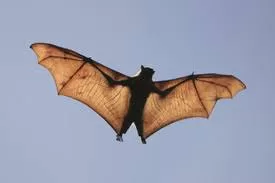Scientists in China have identified a new type of coronavirus in bats that can infect human cells. However, experts emphasize that it poses no immediate threat to public health.
The virus, named HKU5-CoV-2, was discovered in anal swab samples from a Pipistrellus bat, according to a recent study published in the journal Cell. Similar to SARS-CoV-2, the virus responsible for COVID-19, HKU5-CoV-2 uses the ACE2 receptor to enter human cells. Despite this, researchers and public health authorities stress that there is currently no evidence of human infection.
The U.S. Centers for Disease Control and Prevention (CDC) reassured the public that HKU5-CoV-2 does not spread easily among humans like COVID-19. “There is no reason to believe it currently poses a concern to public health,” a CDC spokesperson told CNN. However, the agency noted that it will continue to monitor emerging viruses and provide updates as needed.
The virus was identified by scientists at the Wuhan Institute of Virology during ongoing studies on bats, which are natural reservoirs for coronaviruses. HKU5-CoV-2 belongs to the same viral family as Middle East respiratory syndrome (MERS), a coronavirus that has caused deadly outbreaks in the past.
While laboratory tests confirmed that HKU5-CoV-2 can infect human cells, it does so less efficiently than the virus that causes COVID-19. Experts caution against unnecessary alarm, noting that many coronaviruses are capable of infecting human cells without becoming major public health threats.
Dr. Amira Roess, a professor of global health and epidemiology at George Mason University’s College of Public Health, urged against panic. “Even the researchers themselves point out that this should not cause panic,” she said.
Additionally, tests suggest that existing antiviral treatments used against COVID-19 may be effective against HKU5-CoV-2, further reducing any potential risk.
Dr. Alex Greninger, a professor at the University of Washington Medical Center, noted that discoveries like this are not surprising. “There are probably a lot of coronaviruses circulating in bats that can enter human cells,” he said.
Experts also stressed that HKU5-CoV-2 should not overshadow more immediate health concerns, such as the ongoing spread of bird flu among various animals, including cows and cats. “Frankly, we should be talking about those rather than HKU5,” Greninger added.
Phoebe Lostroh, an associate professor of molecular biology at Colorado College, echoed this sentiment. “We ought to be a lot more worried about problems like avian flu and its impact on cows, cats, and other mammals than this new coronavirus,” she said.
Despite the low risk posed by HKU5-CoV-2, the study highlights the importance of global health surveillance. Dr. Roess emphasized the need for continued vigilance in tracking emerging diseases. “It’s sad to think about how we’re separating ourselves from the global public health world,” she said.
The research also reinforces the importance of avoiding close contact with wildlife, especially bats and birds, which are known to carry various pathogens. “There are other things that bats carry that can be very problematic for people,” Roess cautioned. “Respect these wild animals and avoid unnecessary interaction to protect both them and yourself.”
More Information: The U.S. Centers for Disease Control and Prevention provides guidance on how to stay safe around wildlife.
Journal Reference: Cell
Disclaimer: This article is based on currently available scientific research and expert opinions. The situation may evolve as new information emerges. Readers are encouraged to refer to official health organizations for the latest updates.












